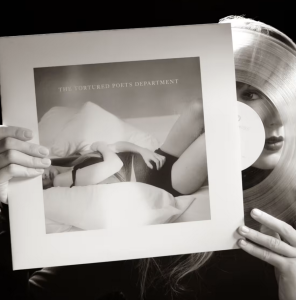Do you remember the popular kids from your middle or high school experience? In my Boston-area middle school, these were the fast crowd kids who were first to throw coed parties, first to experiment with substances, and often first to cut another kid down for not falling in line.
The Perks of Popularity During the Teen Years
Being popular has its perks. Popular kids tend to have their fingers on the pulse of the social scene, and they are often the drivers of a lot of social action. Frequently extroverted, they attract and are attracted to attention, both from peers and adults.
Especially for early adolescents, the draw towards popularity can be strong, as this pull towards high peer-related status comes at just the same moment when kids are beginning to separate from their parents, one of the fundamental developmental tasks in the teenage years.
From the outside looking in, many teens, especially younger teens, assume that popularity is all hearts and flowers.
The Popular Crowd Can Consist of Unstable Friendships
But popularity also has its drawbacks. Within the social circles of popular kids, there is often jockeying for alpha status, which means that kids who seem to be friends with one another will also cut each other down or exclude one another as a means of hanging onto their own social position within the group.
Popularity May Actually Create Shaky Self-Esteem for Some
And those who are being excluded often feel they have to grin and bear it or risk being ousted from their tribe entirely. As a result, kids who appear to have it all together from the outside may be feeling like social imposters, hangers on, or punching bags when it comes to their day-to-day interactions with their so-called friends. This phenomenon does a number on kids’ self-esteem. And it traps them into feeling like they can’t confide their pain in trusted adults, who will likely tell them to either speak up or make new friends, both of which will result, at least temporarily, in isolation.
Popular Kids at Higher Risk…for Risk
Further, popular kids are more likely to engage in behaviors to garner the approval of their peers, which means they are at higher risk for earlier experimentation with drugs and alcohol and anti-authority behavior. These tendencies can put kids who run in the popular crowd in the cross hairs of peer-pressure. Values-wise, popular kids may want to refrain from high-risk behaviors, but they may also be receiving tacit or explicit messaging from their peer group that to hang with the in-crowd, they need to compromise those values.
So what’s a worried parent to do when they are raising a popular kid or a kid who is pining for popularity?
Researchers have found that there are actually TWO different types of popularity, and it’s important to shed light on both types for your child. The first type is called perceived popularity. This is the extent to which one’s peers view a child as having high social status. And it turns out that it’s very possible, even likely, for kids with high perceived popularity to be low in the other type. The second type is called sociometric popularity, and it’s based on the extent to which one is liked or disliked by one’s peers. In other words, one type of popularity is about having power and the other type is about being well-liked.
One type of popularity
is about having power
and the other type
is about being well-liked.
Ask your child whether the peer group they are in or would like to be in are the “powerful” type of popular or the “well-liked” type of popular.
One caveat to keep in mind. Especially in early adolescence, the popular kids are mostly of the powerful variety. As teens age, usually by mid-to-late high school, two types of popular kids have emerged: those with high perceived-popularity (aka “the powerful kids”) and those with high sociometric popularity (the well-liked kids), and sometimes, it’s possible for a child to actually be both.
Use open-ended questions and a non-judgmental tone of curiosity to help your child weigh the pros and cons of their current or hoped-for social scenario. And always start with the pros. If you begin with the negatives, your child will think you have an agenda, and they could shut down or withdraw from the conversation.
For those already running with a popular crowd:
- “What do you like about your current friend group?”
- “Who in your group are you closest to? How do you know you’re close?”
- “If you had a big problem you were dealing with, who in your group would have your back and how would they show you?”
For those pining for the popular crowd:
- “What is it about this group that you like?”
- “Who in the group seems like they could be a good friend, and how do you know that?”
- “What would you look forward to about joining this group?”
Only after you’ve investigated the pros should you switch over to investigating the cons. And this next set of questions is also great to use with kids who aren’t popular, don’t want to be popular, but who may still be feeling left out of the social scene in some way:
- “Do you think this social group is popular because of power or because people like them, both, or neither? Explain.”
- “What are some (potential) drawbacks to running with this crowd?”
- “To what extent does this group have the same type of values you do, and how can you tell?”
- “How secure do you feel your friendships are/would be in this group?”
Depending on your teen’s responses, you can start to determine if the friend group seems like a good match. And if you have concerns, continue to use open-ended questions and a non-judgemental tone to investigate further. Rare is the teen who makes a social change simply because a parent told them to. Rather, they need to come to the conclusion on their own that they are incompatible with their social group, and your incisive and well-timed questions can help with that process. Your questioning can also assist your child in developing the type of discernment skills necessary for friend-making as they age and you have less and less of a role in the process.
Sources
Damour, L. (2017). Untangled: Guiding teenage girls through the seven transitions into adulthood. Ballantine Books.
Parkhurst, J. T., & Hopmeyer, A. (1998). Sociometric Popularity and Peer-Perceived Popularity: Two Distinct Dimensions of Peer Status. The Journal of Early Adolescence, 18(2), 125–144. https://doi.org/10.1177/0272431698018002001\
POSTIGO-ZEGARRA, S.; SCHOEPS, K.; MONTOYA-CASTILLA, I. What Does It Mean to Be Popular in Spain? Mixed-Method Analysis of Popularity as Perceived by Teenagers and Their Teachers. Youth & Society, [s. l.], v. 53, n. 3, p. 392–416, 2021. DOI 10.1177/0044118X19855899. Disponível em: https://research.ebsco.com/linkprocessor/plink?id=6634b7a8-adc1-3cc2-a48e-1ccb2ab2911f. Accessed: August 8, 2023.
WOLTERS, N. et al. Behavioral, Personality, and Communicative Predictors of Acceptance and Popularity in Early Adolescence. Journal of Early Adolescence, [s. l.], v. 34, n. 5, p. 585–605, 2014. Disponível em: https://research.ebsco.com/linkprocessor/plink?id=85c6ed4f-09ac-3e5e-8f39-522976b428a9.
Accessed: August 8, 2023.




